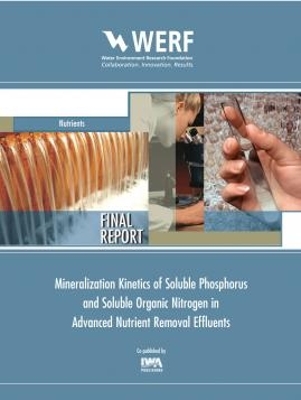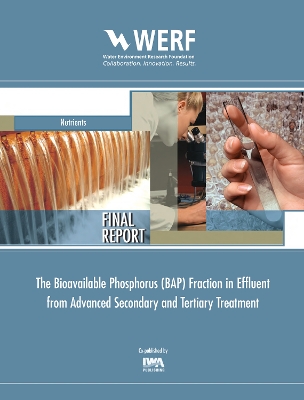WERF Research Report
1 primary work • 2 total works
Book 9781780407302
Mineralization Kinetics of Soluble Phosphorus and Soluble Organic Nitrogen in Advanced Nutrient Removal Effluents
by Michael T Brett, Bo Li, and Lu Fan
Published 1 October 2015
Given the importance of the watershed protection plans, direct determination of phosphorus (P) mineralization kinetics in advanced wastewater treatment facility effluents is crucial for developing the most protective strategies for minimizing eutrophication in receiving surface waters. In this study, bioassays were used to determine the mineralization rate of dissolved P in effluents from a broad range of advanced nutrient removal technologies (MBR, traditional biological, tertiary membrane, Blue PROTM, and etc.). Mineralization kinetics were described by a gamma model and three first-order decay models. A traditional one-pool model correlated poorly with the experimental data (i.e., r2= 0.73 +/- 0.09), whereas two and three-pool models performed much better (i.e., r2> 0.9). These models provided strong evidence for the existence of recalcitrant P in the effluents from these facilities. The Gamma model showed the mineralization of organic P followed a reactive continuum and further suggested the partitioning of P loads with different bioavailability levels should be accounted for the future modeling practices. Although the gamma model should be considered as theoretically correct model, the results also suggested simpler two and three-pool models could provide similar fits depending on the effluents.
WERF Report: NUTR1R06p
WERF Report: NUTR1R06p
Due to the widespread severity of eutrophication in surface waters, there is a strong impetus to require ultra-low effluent phosphorus (P) concentrations (i.e., 50%) of the effluent P was recalcitrant to algal growth. Comparisons between different technologies indicate higher chemical doses, which also achieved lower effluent P concentrations, decreased the fraction of the phosphorus that was bioavailable (BAP%). The results also suggest that the effluent total reactive phosphorus (TRP) concentration has, of the operational characterization assessed, the strongest statistical associated (r2 = 0.81) with the total effluent BAP concentration with the average BAP to TRP ratio of 0.61 +/- 0.24. The results of this work should encourage water quality modelers and TMDL permit writers to consider the importance of BAP when assessing the likely ecological impacts of municipal nutrient removal facility effluent discharges.
The bioavailability of a variety of well-defined P containing compounds was also characterized. The results clearly show the operationally defined P classification scheme from classic chemical methods is problematic. Algal phosphorus uptake experiments also suggest that P species with high bioavailability, including some organic P species, are unlikely to persist in natural surface waters because their uptake kinetics are very rapid. These results further suggest recalcitrant P compounds, such as humic-metal-P complexes, phytic acid and/or apatite may be the dominant components of the recalcitrant dissolved P pool in effluents identified in this and other studies.
The bioavailability of a variety of well-defined P containing compounds was also characterized. The results clearly show the operationally defined P classification scheme from classic chemical methods is problematic. Algal phosphorus uptake experiments also suggest that P species with high bioavailability, including some organic P species, are unlikely to persist in natural surface waters because their uptake kinetics are very rapid. These results further suggest recalcitrant P compounds, such as humic-metal-P complexes, phytic acid and/or apatite may be the dominant components of the recalcitrant dissolved P pool in effluents identified in this and other studies.

